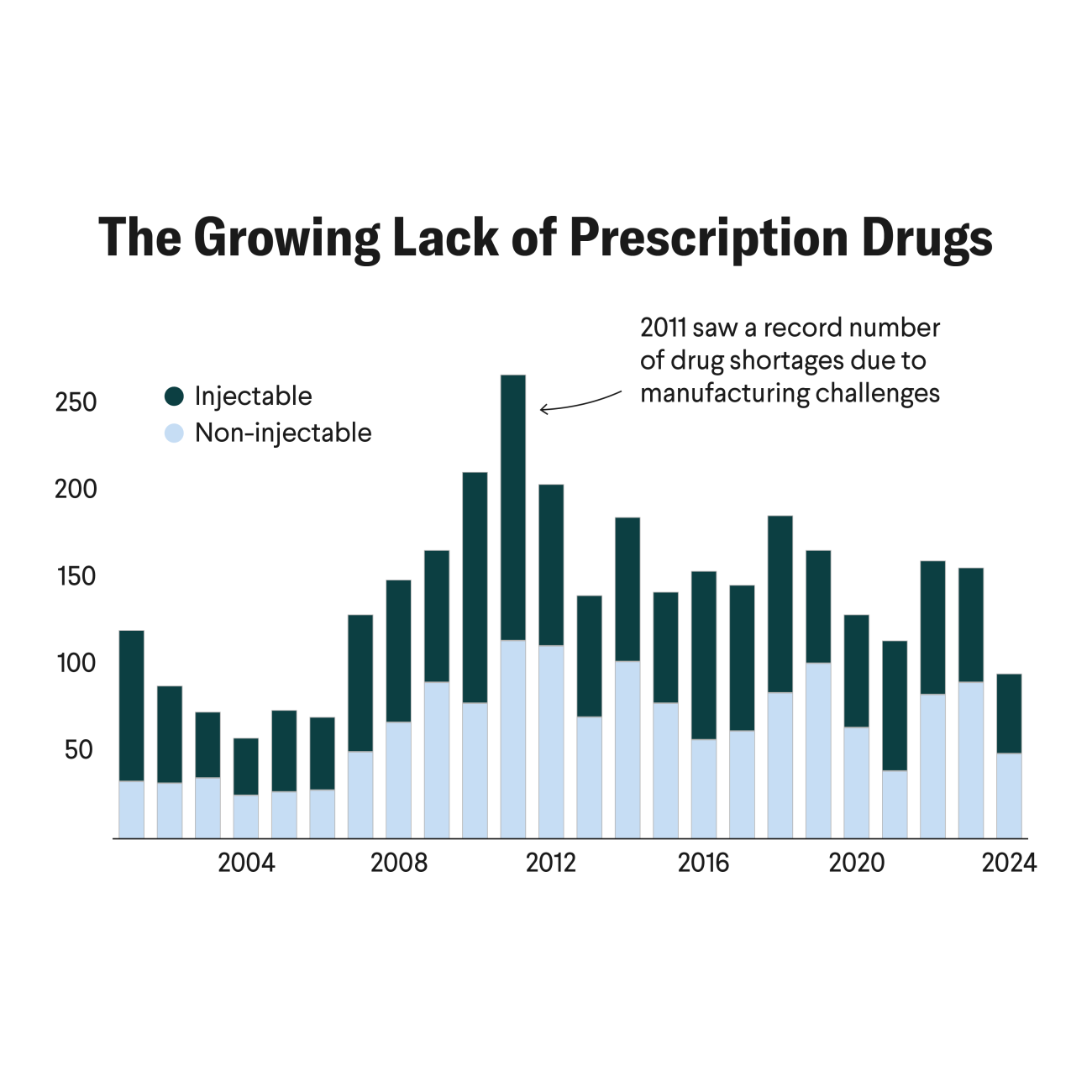The average American eats 20 pounds of seafood each year—about three-fourths of which is imported. New tariffs will increase prices for and reduce consumption of shrimp, salmon, canned tuna, and tilapia—the four most popular seafood products in the United States. That could pit Americans' heart health against their wallets.
The U.S. Department of Agriculture (USDA) dietary guidelines [PDF] recommend consuming eight ounces of seafood per week, or 26 pounds per year. Underlying that recommendation is a mountain of scientific evidence showing that consuming seafood rich in omega-3 fatty acids supports health and reduces risk of cardiovascular disease, the leading cause of death in the United States.
Seafood imports have made fish and shellfish more affordable for low- or middle-income families. The real price of shrimp, the most popular seafood consumed in the United States, decreased dramatically in recent decades thanks to farmed shrimp imports. Salmon prices also tumbled with innovations in salmon farming.
Despite low-priced seafood imports, Americans eat too little seafood and too much of other animal proteins that pose health risks. Seafood is still relatively expensive compared to domestically produced meat, poultry, and eggs, and 90% of Americans [PDF] fall short of the goal of eating eight ounces of seafood each week. At the same time, 70% of Americans consume more than the USDA recommendations for meat, poultry, and eggs.
Because most seafood is imported, tariffs will cause Americans to eat less heart-healthy seafood and more heart-unhealthy red meat. Tariffs will hit vulnerable populations particularly hard, in part by contributing to higher overall food prices and steering low-income consumers away from healthy seafood alternatives. Low-income consumers already struggle to incorporate seafood into their diets and fall short of USDA seafood consumption guidelines more than the average American. They also tend to consume seafood lower in healthy omega-3s compared to high-income consumers.
Higher food prices could exacerbate food insecurity for Supplemental Nutrition Assistance Program (SNAP) and Special Supplemental Nutrition Program for Women, Infants, and Children (WIC) recipients, whose benefits will stretch less far. Patients with cardiovascular disease who are trying to modify their diets to follow health recommendations that encourage them to eat more fish and less meat will also face cost barriers. A prominent study in JAMA concluded that eating one to two servings of seafood each week "reduces risk of coronary death by 36%," suggesting that eating just one serving of farmed Atlantic salmon each week is among the most cost-effective ways to reduce cardiovascular disease risk.
New tariffs on China—totaling 145% as of April 15—will be particularly deleterious for seafood imports. Based on trade data collected by the National Oceanic and Atmospheric Administration (NOAA), in 2024 the United States imported 769 million pounds of seafood from China, the largest volume from any country. That's more than two pounds of fish and shellfish per U.S. resident, or 10% of the total seafood the average American eats. Tilapia, the fourth most consumed seafood in the United States, accounts for 266 million pounds of Chinese exports to the United States.
The next two largest seafood exporters to the U.S. market are India and Vietnam, which now face tariffs of 10% while the proposed 26% and 46% tariffs, respectively, are on pause. India and Vietnam combined accounted for 1.35 billion pounds of U.S. seafood imports in 2024. Canada ranked fourth and now has a 25% tariff. The United States imported 153 million pounds of farmed Atlantic salmon from Canada in 2024, enough to supply every American with one week's worth of omega-3s.
Higher seafood prices will put more pressure on fish stocks as consumers try to catch their own. Americans took 200 million recreational fishing trips in 2022. Many of these were catch-and-release, many were both for fun and for food, and some were important contributors to subsistence. Self-caught fish can temporarily relieve some of the impacts of high prices on food security, but recreational fisheries cannot sustain increased pressure without substantial improvements in management.
The Tariff Effect on Domestic Seafood Prices
Seafood caught in U.S. waters will become less affordable for American consumers. The prices of domestic wild-caught shrimp from the Gulf of Mexico are driven by imports, so tariffs will increase domestic shrimp prices. That's a financial boon for thousands of U.S. shrimpers and a drag for 340 million U.S. consumers.
Import tariffs will also increase the price of U.S. catch that is exported for processing and then imported back into the U.S. market. The new policy harms many domestic seafood producers by taxing seafood of domestic origin that is exported for processing before coming back to the United States. Consumers pay higher prices and buy less seafood, and producers receive lower prices and sell less seafood. It's a lose-lose for the health of Americans and for the profits of large segments of the U.S. seafood industry.
The United States imported 62 million pounds of salmon products—much in the form of frozen fillets—from China in 2024 and exported 70 million pounds—much in the form of frozen whole pink and chum salmon—to China the same year. I remember having to explain to my mother-in-law the dissonant "Product of China" label on the Alaskan salmon fillet in her local supermarket. That salmon caught in Alaska had been frozen whole, shipped to China, thawed and filleted, frozen again, and shipped back to the United States.
The U.S. seafood industry will experience additional losses as other countries retaliate with import tariffs of their own. The United States exported more than $900 million of seafood to China in 2024—much of which was destined for Chinese or other markets after processing. Among those exports was more than $200 million worth of lobster but, unlike with salmon, the United States did not import any lobster from China. Tariffs could help Gulf shrimpers, who sell mostly into the domestic market, but a trade war with China harms Maine lobstermen and other U.S. seafood producers with substantial exports. Importers of U.S. seafood have other options for sourcing fish and shellfish. China already imports some of the same species of fish from Russia as it does from U.S. catches in Alaska and could expand its reliance on Russian imports.
Consuming U.S.-caught seafood rather than exporting it is not the solution. Exporters benefit from selling seafood into markets with tastes for products that the average American doesn't have. Take, for example, Atka mackerel. The United States exported 85 million pounds of Atka mackerel in 2024, 64% of which went to Japan. Pacific whiting is another fish that's more popular overseas. Last year, 79 million pounds of whiting were exported mostly to Nigeria and eastern Europe. Imposing tariffs and force-feeding American consumers Pacific whiting and Atka mackerel is not a good plan.
Americans enjoy shrimp, fresh farmed Atlantic salmon, tuna salad sandwiches, and tilapia fillets that take a sauce. Eating fewer of these seafood products and more chicken nuggets, hamburgers, turkey sandwiches, and pork barbecue will likely make Americans' diets worse.
The typical argument for tariffs is that they benefit domestic producers even if that comes at the expense of domestic consumers. However, tariffs on countries that the United States relies heavily on for imported seafood will be a lose-lose. American consumers will be less healthy, and the U.S. seafood industry will be less profitable.



